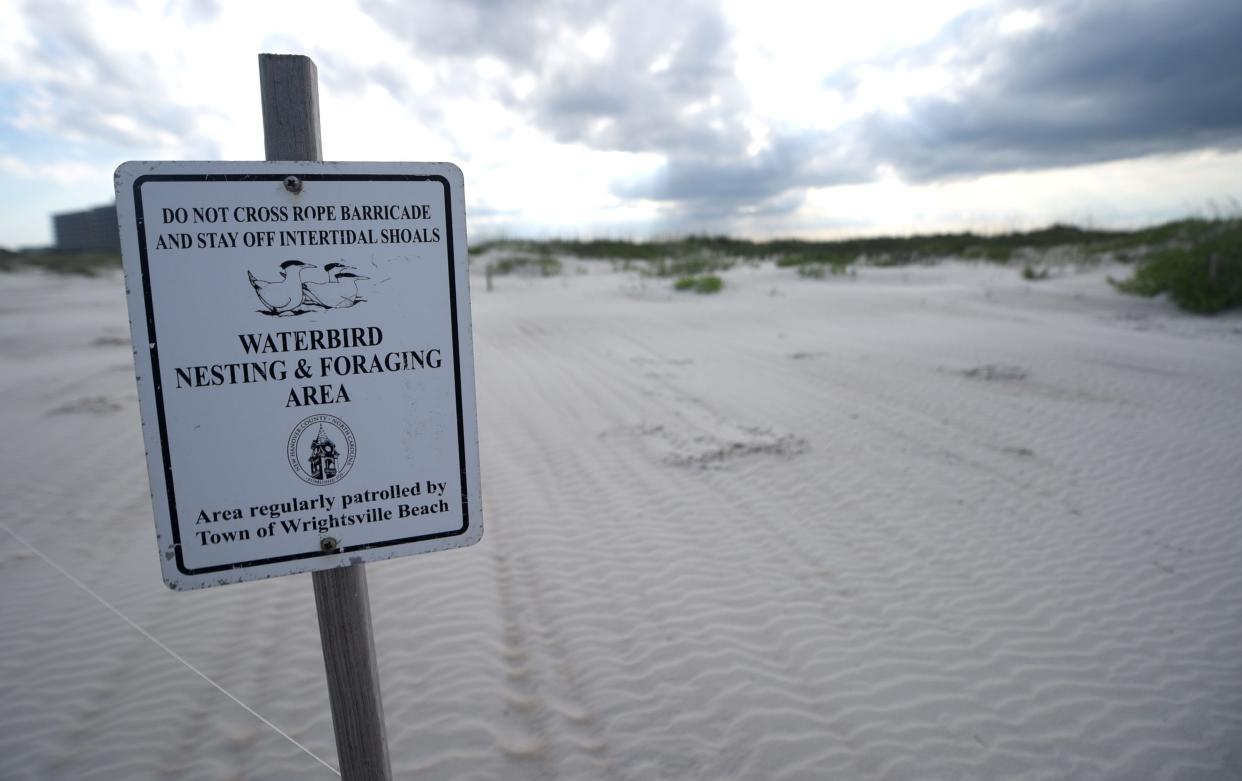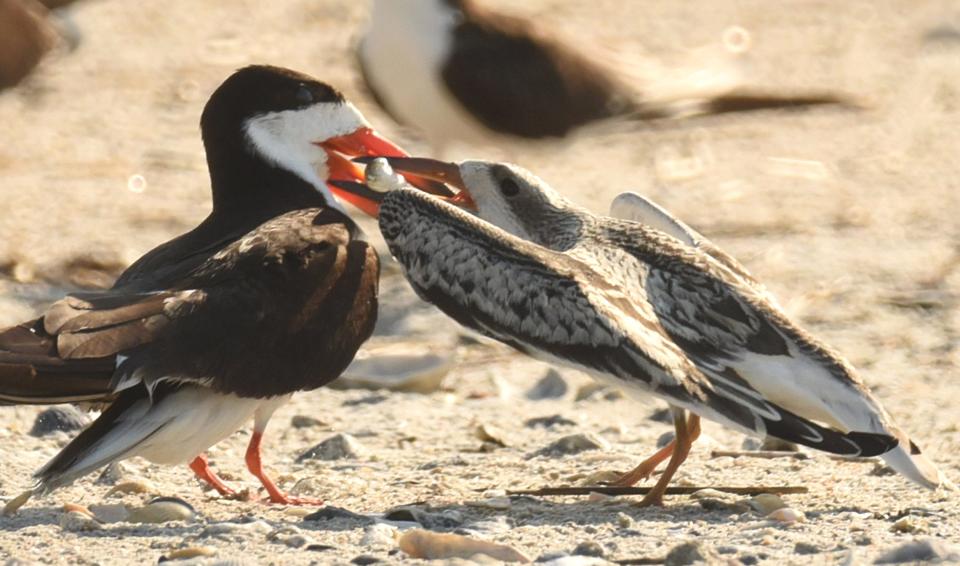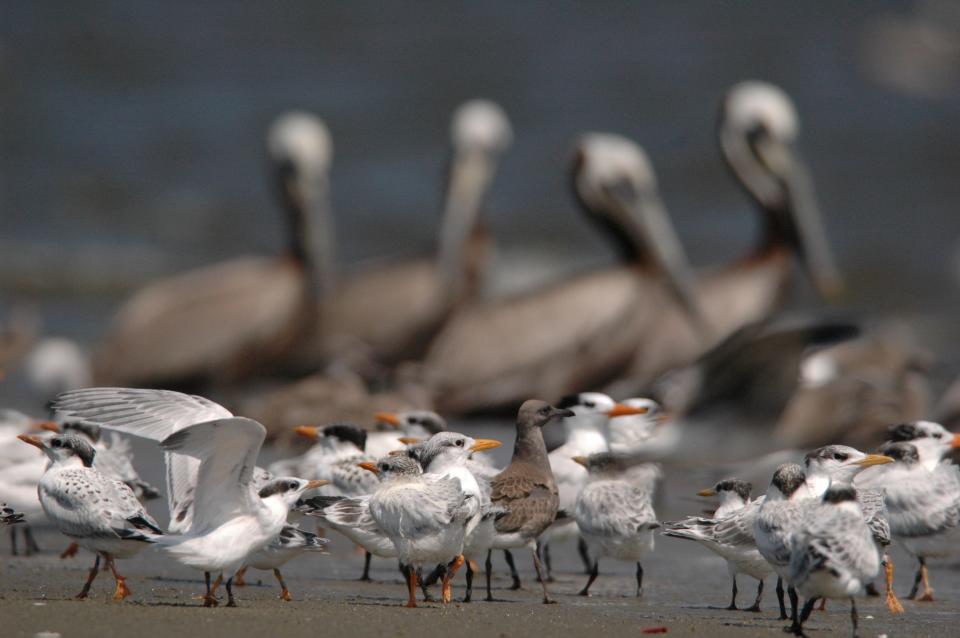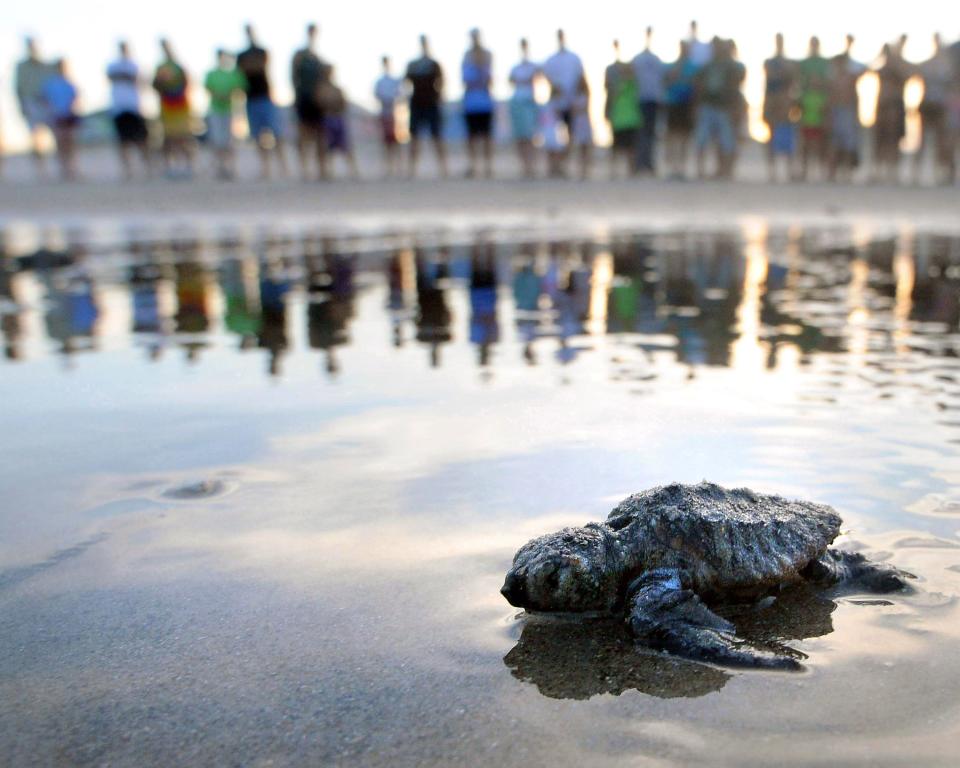As weather warms, nesting shorebirds and sea turtles join people heading to NC's beaches

As the weather warms, sun-seeking tourists aren't the only ones drawn to North Carolina's rich necklace of barrier islands along its 320 miles of coastline.
If you’re visiting the beach this summer, there’s a good chance you’ll see wildlife mixed in with visitors and the occasional resident.
But sharing valuable beach real estate with nesting shorebirds and sea turtles can be challenging.
Mix in the loss of habitat on many islands to development, the growing risk from climate change, and the increased threat of disturbance tied to human activities, dogs and even predators and the odds are often stacked against the native fauna.
The eggs and chicks of nesting shorebirds often blend in perfectly with the sand, making it easy for people or pets to accidentally step on them. Getting close to the nests or babies can be just as bad, scaring the parents off and leaving the eggs and chicks at the mercy of predators and the summer heat.
That's where groups like the N.C. Wildlife Resources Commission and Audubon North Carolina come in to help level the playing field.
Hundreds of signs ring the state's coastal nesting sanctuaries from Currituck Sound in the north to Sunset Beach in the south, warning visitors to respect nesting areas. In some locations, including Wrightsville Beach, volunteers help reinforce that message.
Hope Sutton, eastern wildlife diversity supervisor with the wildlife commission, said education and outreach efforts are some of the most powerful tools officials have to raise awareness about the birds' requirements.
PHOTOS: Bird watching in the Wilmington area

"It's a critical component, whether its students at Wrightsville Beach Elementary making cute signs to warn beachgoers to stay out of the refuge or adults learning about these birds through one of our outreach activities," she said. "Our behavior patterns can really impact the chance of success many of these birds species have."
The helping hand comes as regulators worry about the future of some of the state's shorebirds.
North Carolina's 2023 waterbird survey, which is conducted every three years and is a collaborative effort among government agencies and environmental groups, showed substantial dips in the numbers of many nesting shorebirds. Among wading birds, that list included cattle egrets, tricolored heron, little blue herons, snowy egrets and glossy ibis. Beach-nesting species showing substantial declines included the common tern, gull-billed tern, and Caspian tern.
Another species that is in trouble is the black skimmer, with North Carolina's population decreasing by half since 1999. Because skimmers nest directly on the open sand, they are especially vulnerable to disturbance and loss of nesting sites.
But the survey wasn't all bad news. Least tern numbers were found to be increasing, with many of the nests found on the beaches at the south end of Wrightsville Beach and on Lea-Hutaff Island in Pender County. Brown pelicans also are doing well, with 5,227 nests reported in 2023, well above the 15-year average of about 4,000 nests.
WHAT'S FLYING BY? Researchers go high-tech to track migratory birds along Pender County coast

Many of the shorebirds holding their own nest on spoil islands, like those in the Cape Fear River or Intracoastal Waterway, or on sections of protected natural areas like Masonboro Island that are hard to access.
But climate change is an unknown variable that could add to the pressure many species face. On low-lying manmade dredge islands, for example, rising seas and stronger tropical storms tied to warming temperatures could increase erosion and overwash threats.
"And the competition for sand is already tough and is likely to get worse in the coming decades," Sutton said, referring to the limited nearshore sand resources and many coastal towns now seeking nourishment projects to boost their eroding beaches.
A warming climate also could prompt some birds to nest sooner.
Lindsay Addison, a coastal biologist with Audubon North Carolina, said learning to share the beach and knowing when to back away, such as when a shorebird starts acting irritated, can go a long way to help.
"Anyone who has lived down here for a while knows that there are more and more people now, and sometimes it's really hard to anywhere along the coast and not run into a lot of people," she said. "The birds also are experiencing that, and there are a lot of opportunities for people to disturb them and impact their survival.
"But if we just keep our distance and take some other steps, like keeping our dogs on a leash during certain times, it can make a really huge difference."
Shorebird nesting season runs from March through mid-September.
Turtle time
Shorebirds aren't the only ones looking to nest on area beaches. Peak sea turtle nesting season begins May 1 and continues through the end of October.
Most local beaches are monitored daily during sea turtle nesting season to look for evidence of nests, which are then monitored and protected if needed during the roughly two-month incubation period.
While sea turtle nesting numbers have been showing increases in recent years, regulators and environmentalists warn the marine reptiles still face many threats − especially during the decades they navigate the oceans before females return to their birth beach to nest.
While on the beach, threats dangers include holes dug in the sand and left by beachgoers, which can trap hatchlings after they emerge from the nest, and bright lights from homes and businesses that can distract nesting mothers and hatchlings and lead them away from the ocean.
CONSERVATION WIN? NC sees record number of green sea turtle nests in 2023

Sharing the beach
Tips from the N.C. Wildlife Resources Commission on how to share the beach with nesting wildlife this summer:
Respect the boundaries of the roped-off nesting areas
Keep dogs on a leash
Follow beach driving regulations
Throw away trash properly, including fishing line and kite strings
Don't feed sea gulls or least terns
Don't fly drones or kites near nesting sites
Reporter Gareth McGrath can be reached at GMcGrath@Gannett.com or @GarethMcGrathSN on X/Twitter. This story was produced with financial support from the Green South Foundation and the Prentice Foundation. The USA TODAY Network maintains full editorial control of the work.
This article originally appeared on Wilmington StarNews: As weather warms, people aren't the only ones heading to NC's beaches

